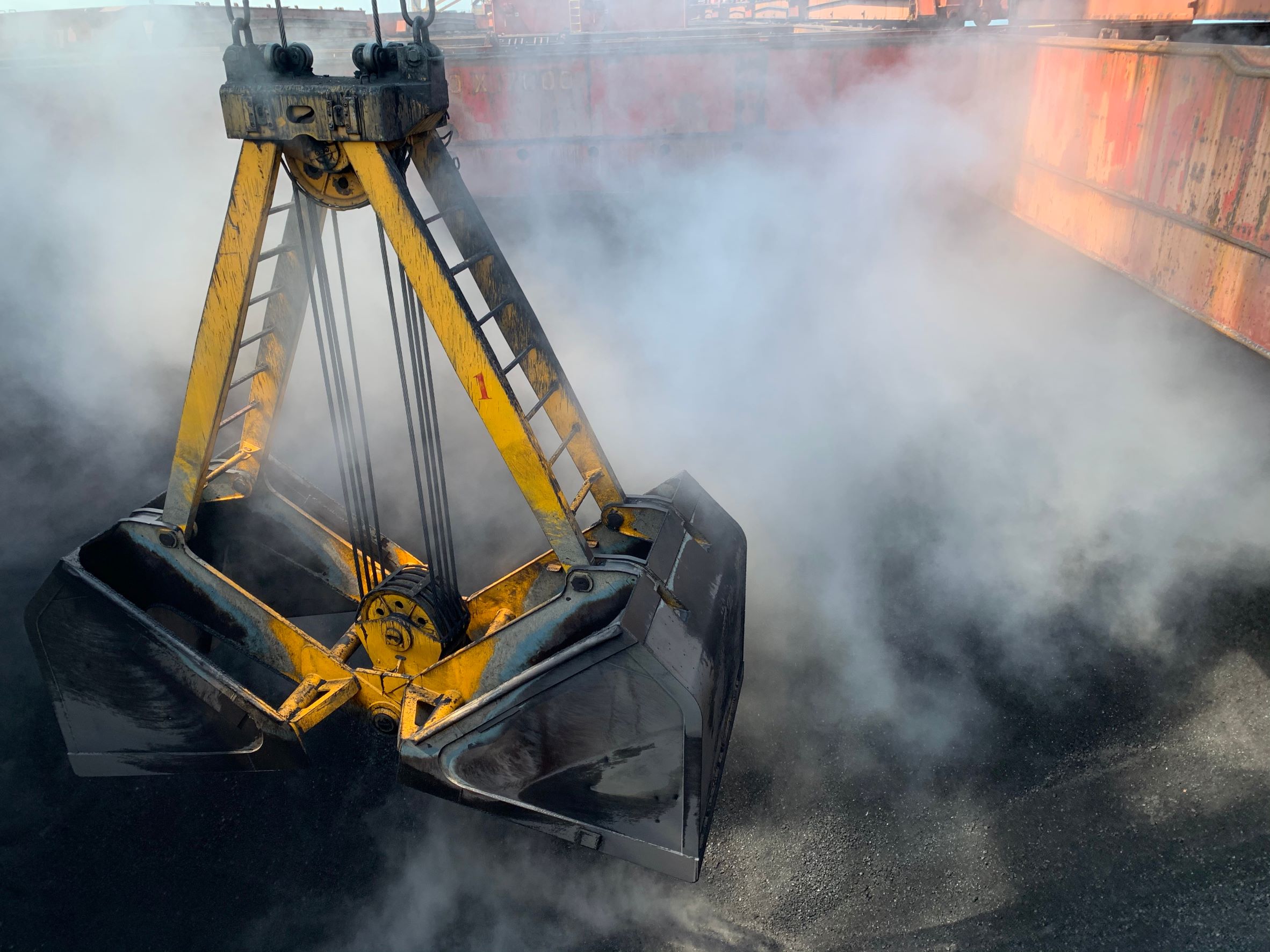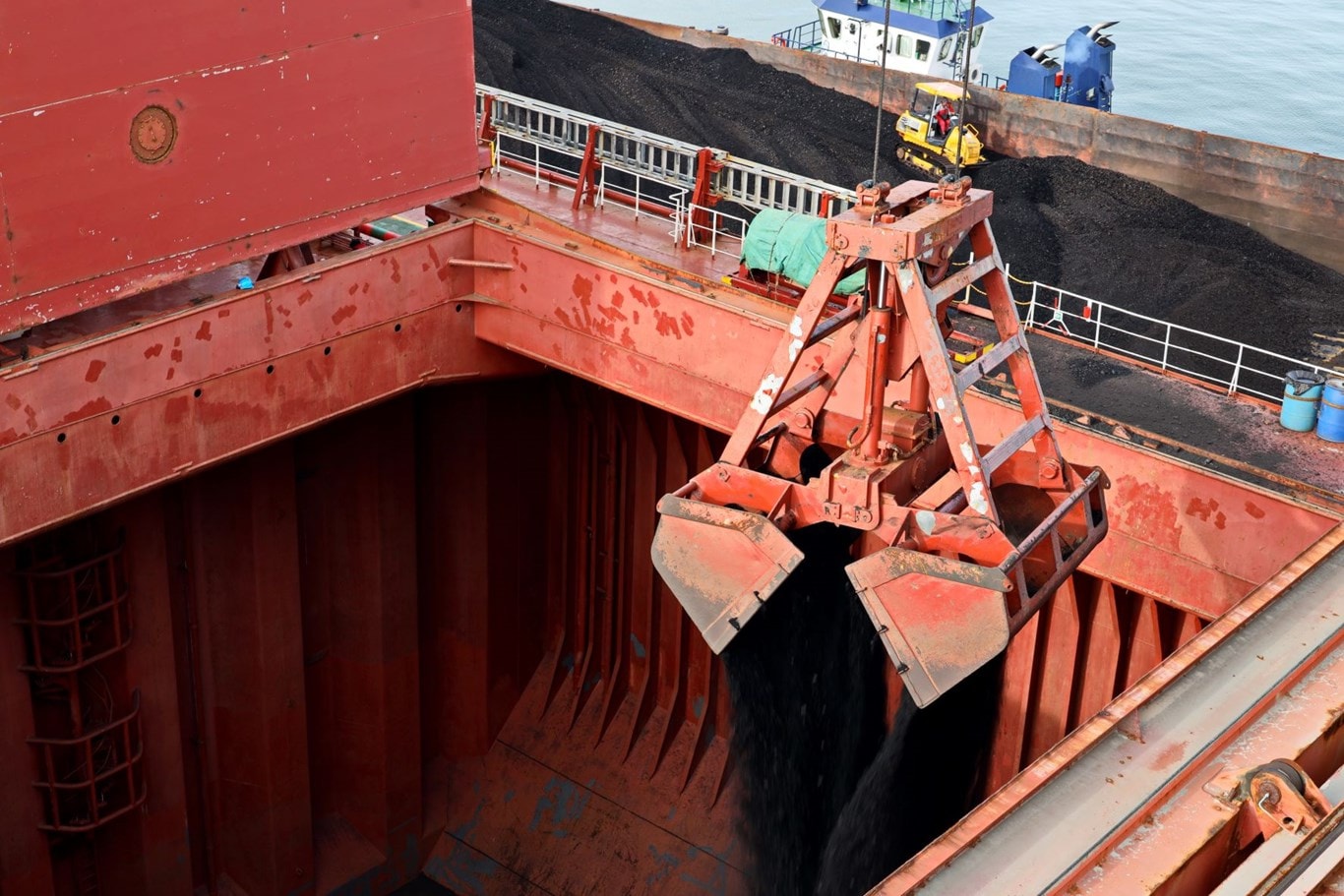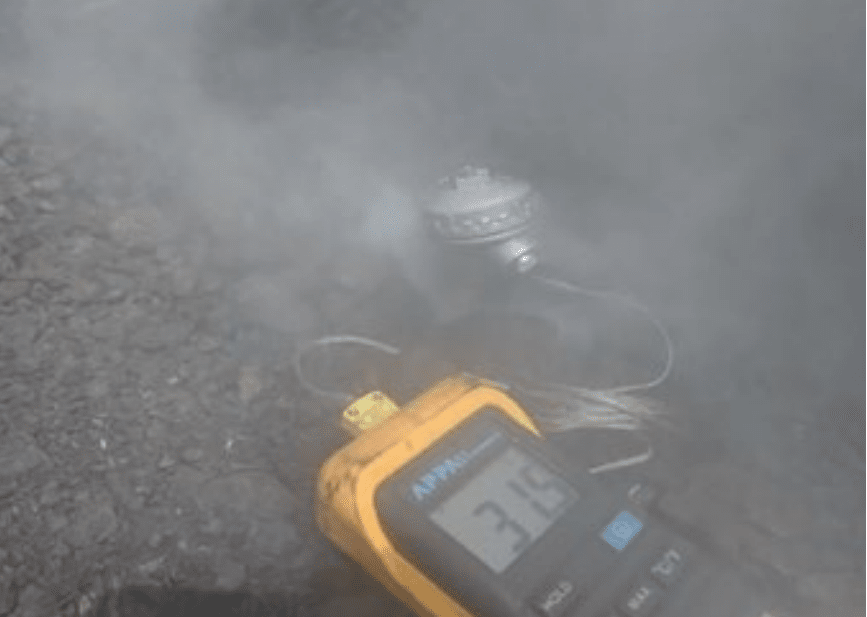
Loading of Coal that has Exhibited Signs of Self-Heating
Loss Prevention Bulletin
Members are reminded that self-heating of coal is more likely when the coal is low rank, geologically immature material sourced from open cast mines such as that commonly shipped from Kalimantan in Indonesia. The IMSBC Code sets out that, for self-heating coals, the temperature of the cargo shall be monitored prior to loading and cargo shall only be accepted for loading when the temperature of the cargo is not higher than 55°C.
Mark Dunbar
(Surveys Manager, West P&I)
Shippers are either pressing for cargo to be loaded from areas on the barge where no excessive temperatures have been recorded, or after “cooling“ of the cargo on the barge.
- Turning the cargo over with a
payloader or using grabs
- Spraying with fresh or, more
frequently, salt water
- Spraying with chemicals which
are designed to inhibit the
oxidation reaction.
In the Club’s experience none of these remedial actions are very effective. Although some localised cooling may be measured, coal is thermally insulating and any action that can be taken on a barge will not deal with the fundamental problem of the bulk of the coal being too hot.

The only reliable method to cool
coal that has started to self-heat is
to unload it ashore onto a wharf or
similar, and then spread it out in a
relatively thin layer which will allow
it to cool and stabilise.
Crushing of the coal with a roller
and dousing with fresh water can
accelerate this cooling process,
although clearly none of these
methods are practicable or
achievable on a barge
Within the cargo holds this cargo then continued to self-heat to temperatures in excess of 55°C, as well as giving off smoke/steam.
If cargo already loaded is seen to be smoking/steaming or the temperature is found to be greater than 55°C, then no further cargo should be loaded in these hold(s).
The affected cargo hold(s) should be closed without delay with no ventilation, and gas monitoring as per the IMSBC Code instigated. Expert advice should then be obtained.

Coal on a barge measured to be below 55°C but clearly self-heating as evidenced the smoke /steam
Given the pressure being applied by shippers we would recommend that when fixing, the charter party includes a provision that acceptance of cargo for loading is always to be at the absolute discretion and final control of the Master. With regard to fixing vessel for coal cargoes, the Club often sees allowable cargo described within the charter party as “harmless lawful coal in bulk only” or similar.
Given that the IMSBC Code
categorises coal as Group B (“cargoes
which possess a chemical hazard
which could give rise to a dangerous
situation on a ship”), and possibly
Group A (“cargoes which may liquefy
if shipped at a moisture content in
excess of their transportable moisture
limit”), and also considering the
guidance in the Club’s Loss Prevention
Safety Alert Coal Cargoes – Know the
Dangers, coal can never be harmless
and a better description that could be
considered would be “coal that is not
liable to emit methane or self-heat”.
Members requiring further guidance should contact the Loss Prevention department.

Mark is a Master Mariner with 20 years of seagoing experience. His service has been aboard bulk carriers, OBOs, product tankers, VLCCs, ULCCs, reefers, LPG tankers, chemical tankers, general cargo and ro-ro passenger ferries. Mark joined the Club in 1999 directly from sea and attends to Condition Surveys and other Loss Prevention matters.